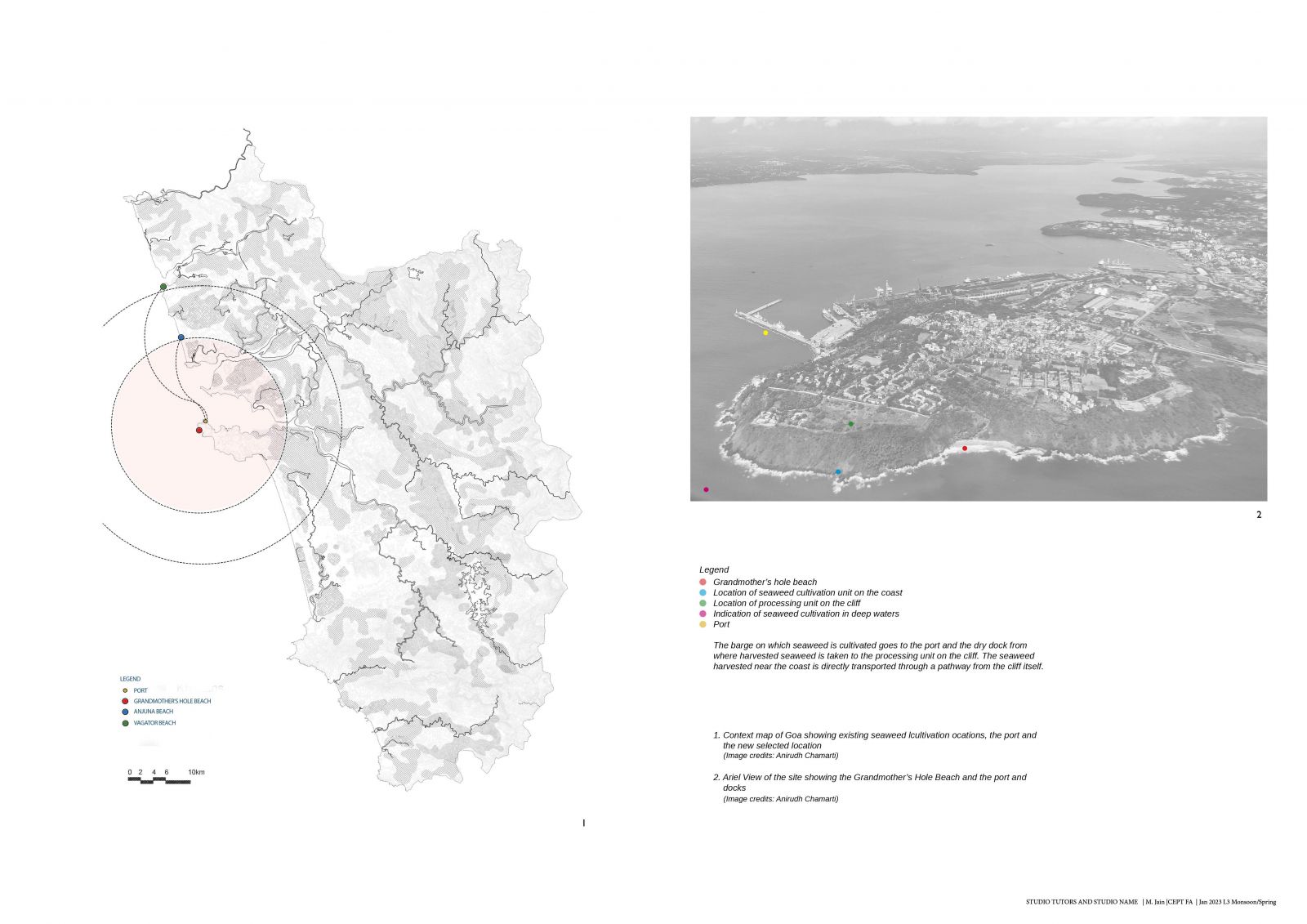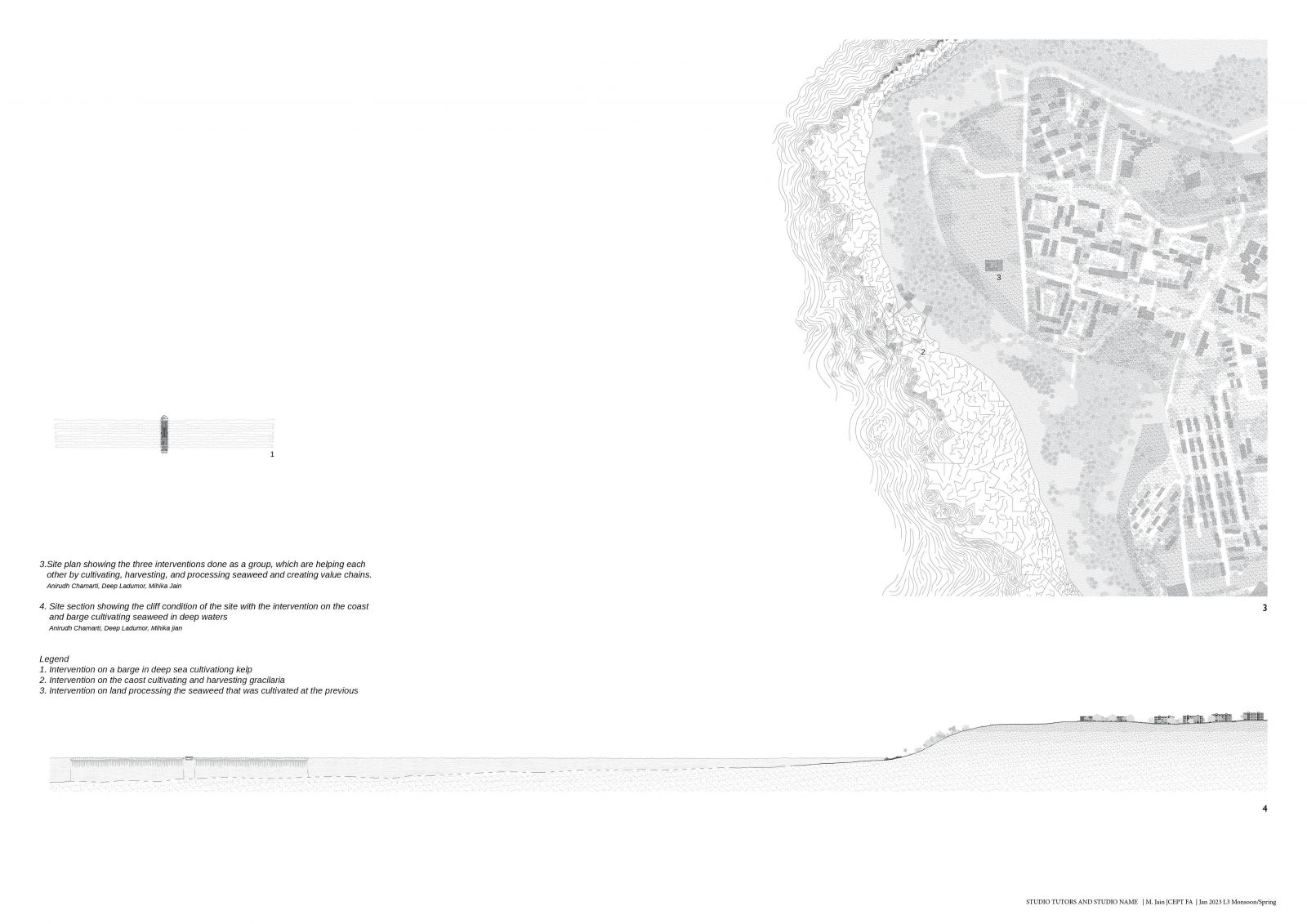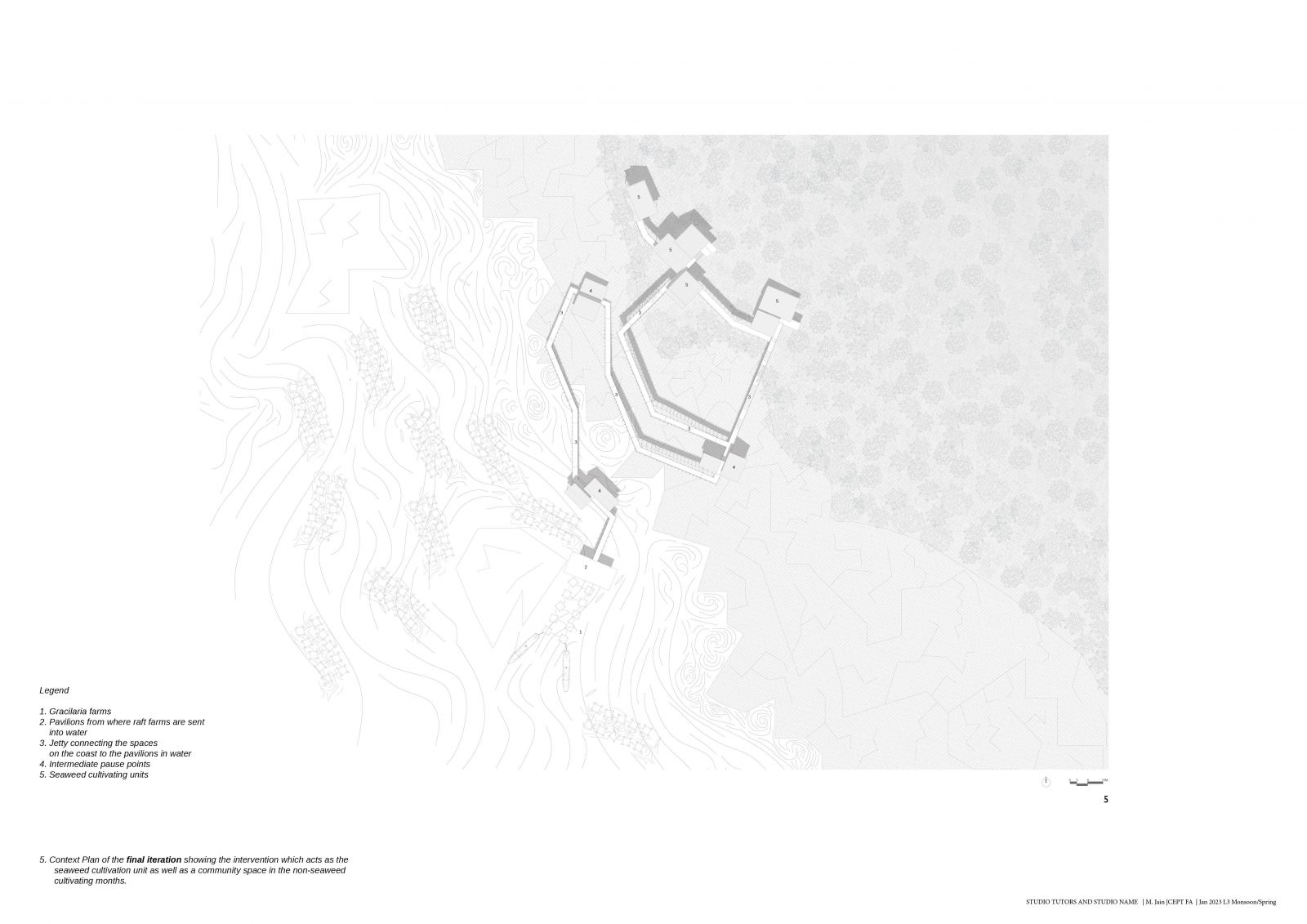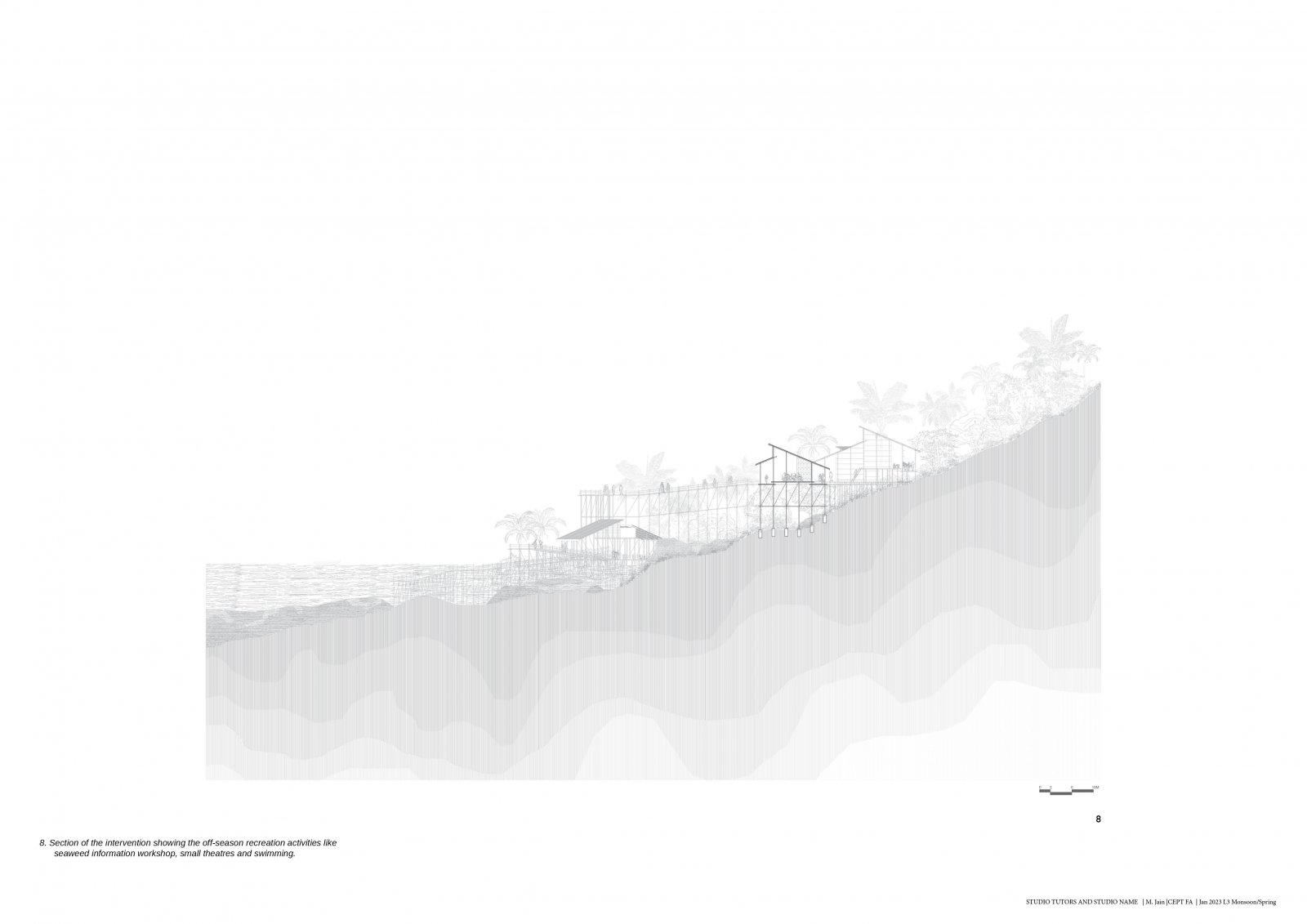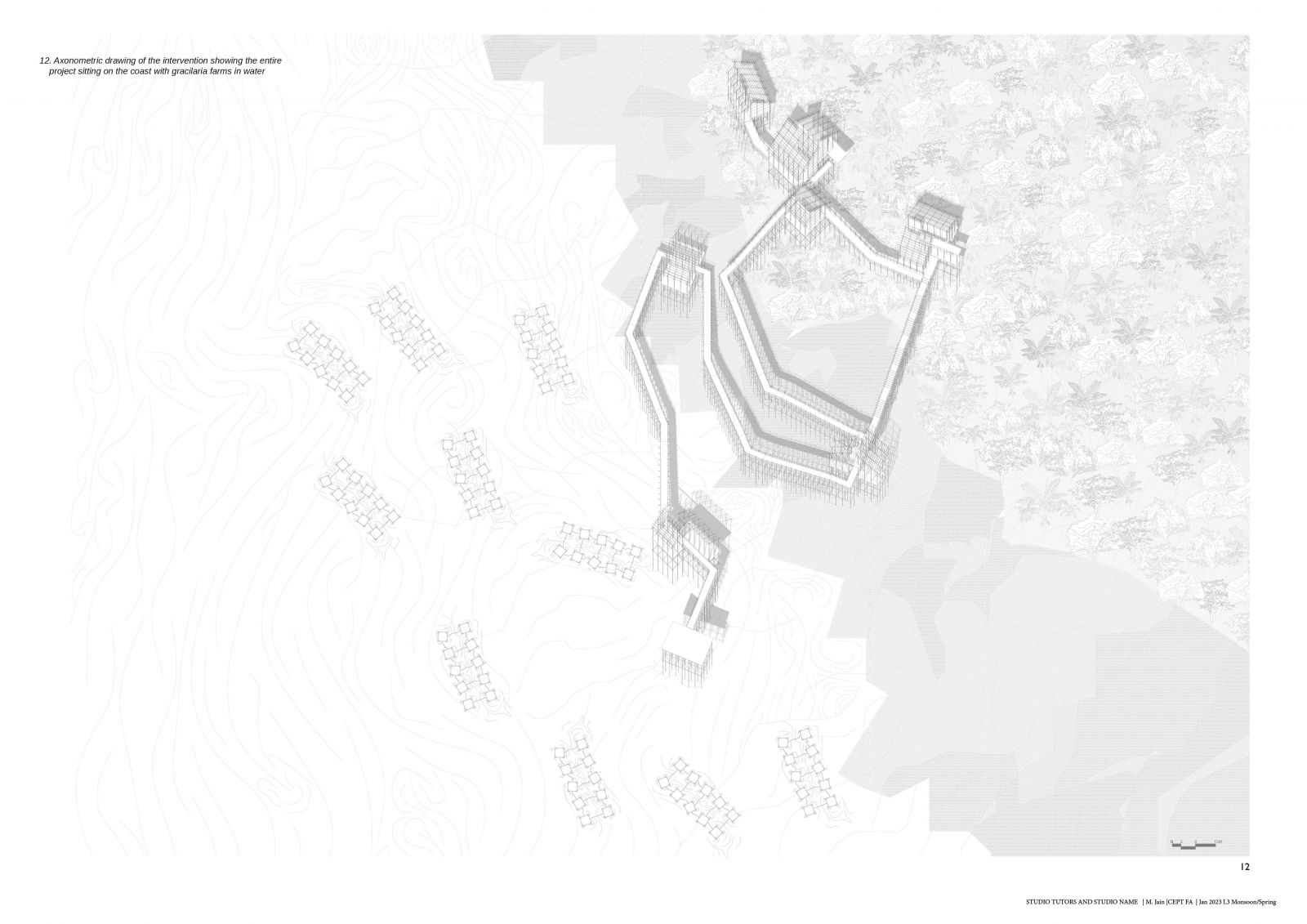Your browser is out-of-date!
For a richer surfing experience on our website, please update your browser. Update my browser now!
For a richer surfing experience on our website, please update your browser. Update my browser now!
The concept of shared benefits from the sea among an entire community can be termed as Aquatic commons. Seaweed cultivation is one such idea. Seaweed is a climate-smart algae that grows in saline water and creates a variety of marine ecosystems by releasing and absorbing essential nutrients, reducing the carbon content in the sea thereby taking part in a give and take process.
Goa, being a home to 145 species of seaweed has a lot of rocky coasts which facilitates its farming.
The program creates a cycles of cultivating, harvesting and processing seaweed at different locations, helping each other and creating value chains, To ensure working of this system, kelp is cultivated using a barge in deep waters, gracilaria is cultivated on the coast along a seaweed cultivation and harvesting unit, and finally processing units on land to carry forward the entire cultivation process.
Gracilaria seaweed is cultivated using the raft method near the coast in shallow waters. To facilitate this, a seaweed cultivation unit is designed along the coast which is connected to a jetty on a rocky terrain, that ensures movement from this unit to the decks in water. The project is managed by farmers who cultivates the seaweed farms during season and becomes a community space off-season, giving a space to the local communities for their recreational activities.
